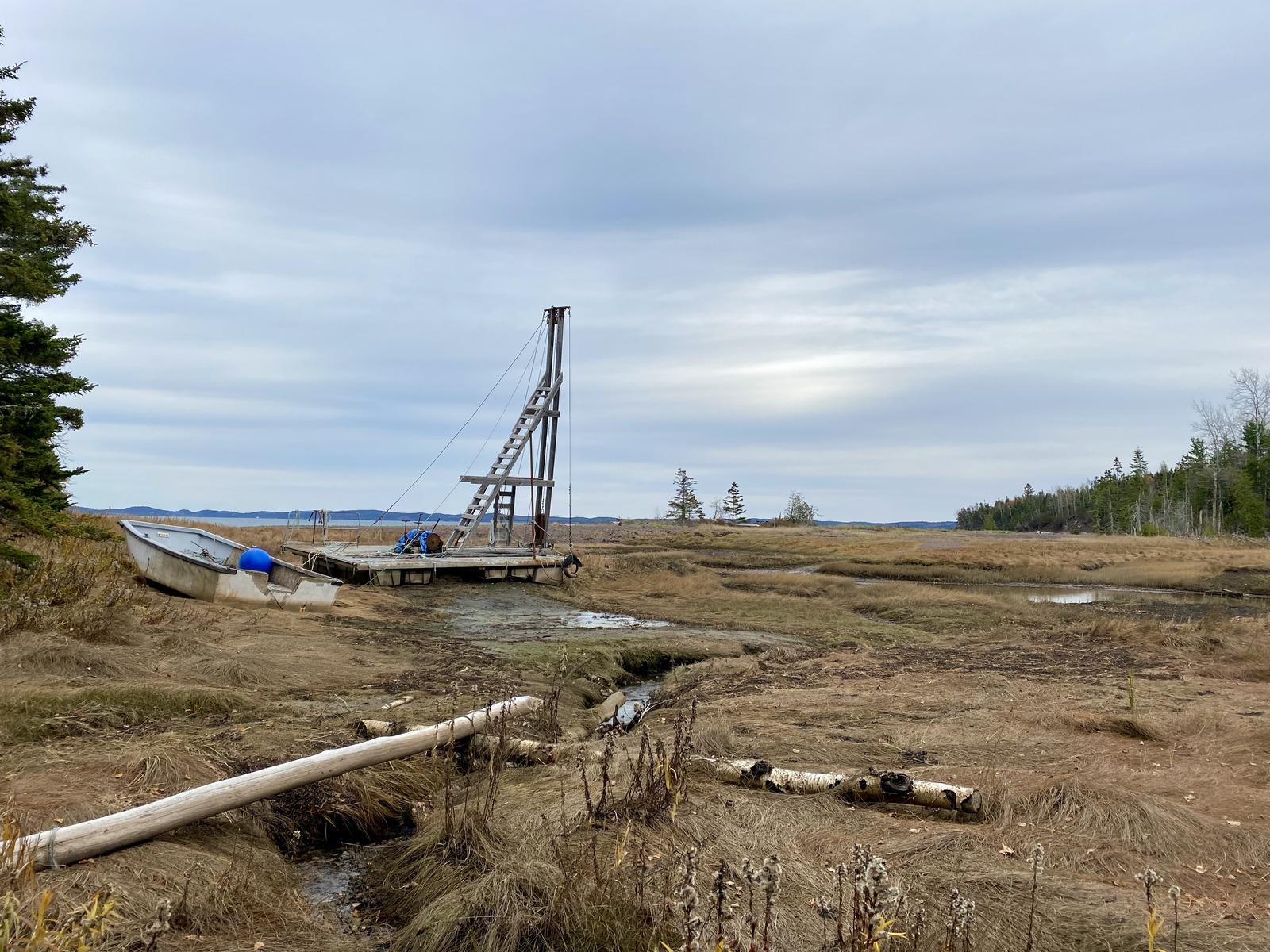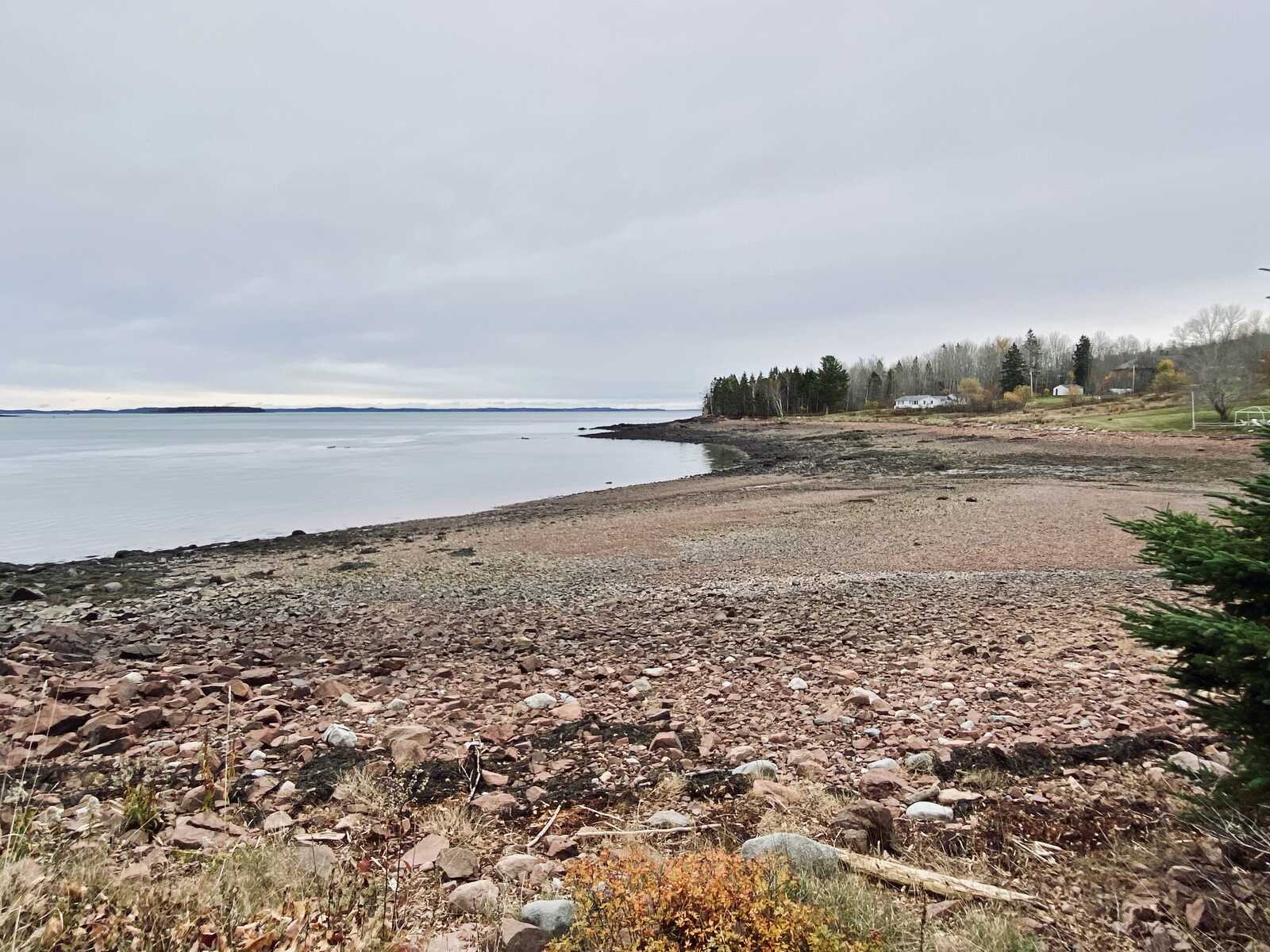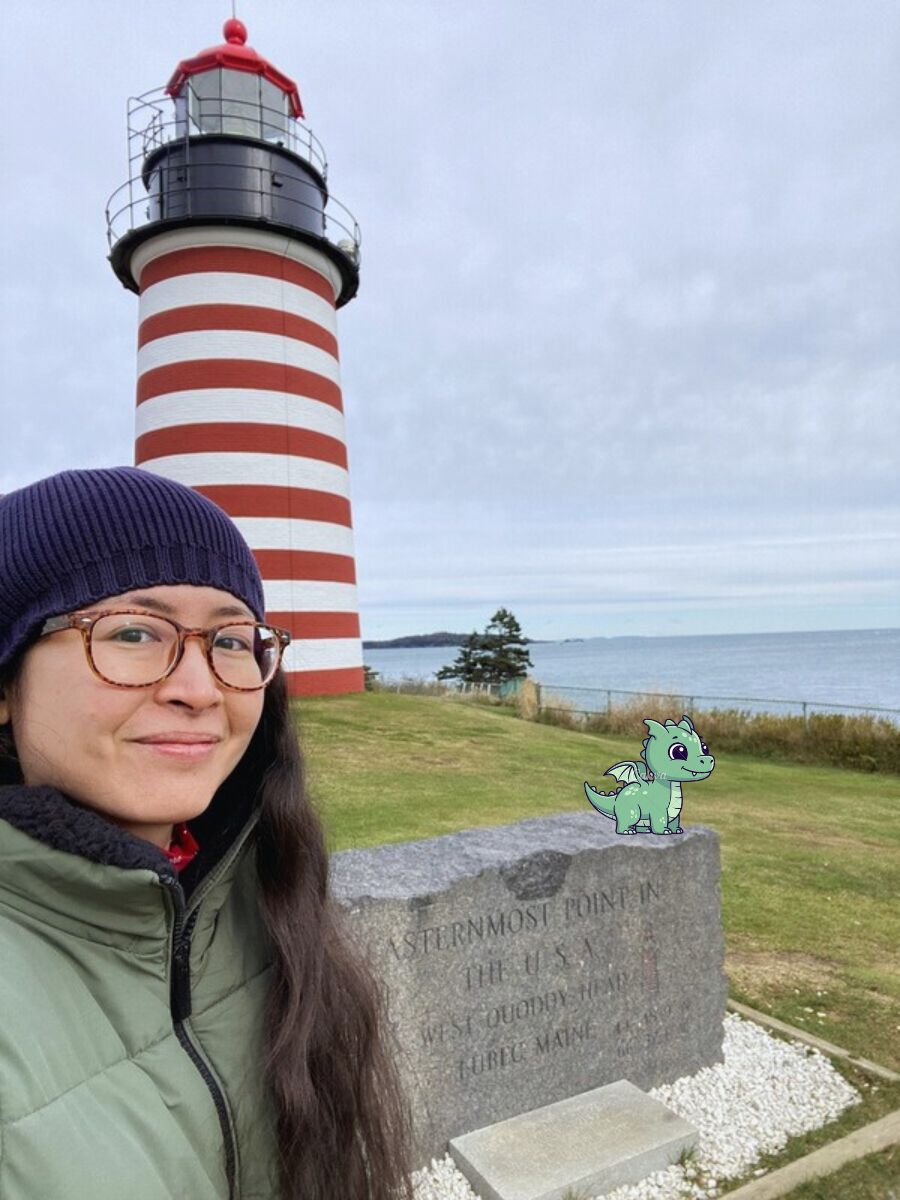During my autumn local road trip this year 🚗 , I viewed Passamaquoddy Bay several times from different locations around Downeast Maine.
I recently learned that “Passamaquoddy” was the name of the fictional town in the 1977 Disney film Pete’s Dragon.
While I’ve spent years in Maine, it took me a long while to actually get out there and explore more of it.
Here are some:
- brief notes about the Pete’s Dragon animation, and
- my field notes and photos from the actual Passamaquoddy Bay location
1. Pete’s Dragon
1977 original vs. 2016 remake


[1977 image from Internet Archive; 2016 image from Wikipedia]
Summary (1977 version, via IMDB): An orphaned boy and his magical dragon come to the New England town of Passamaquoddy with his abusive adoptive parents in pursuit. 6.3/10 stars.
Summary (2016 version, via IMDB): The adventures of an orphaned boy named Pete and his best friend Elliott, who happens to be a dragon. 6.7/10 stars.
Notes
The 1977 version is set in place in a beautiful small coastal town in Maine called Passamaquoddy, which ties in directly to recent explorations of my current area.
The 2016 remake shifts the setting to the Pacific Northwest.
I’ve included review snippets below if you’d like to compare cinematic takes before watching.
1977 version
Several reviewers on IMDB who “like original versions” had a great experience with this version. Some described Elliot (the dragon) as the “best Disney dragon” and that the animated dragon is “indeed a charming character,” but to watch out when he’s off-screen.
In a Parents’ Guide to Pete’s Dragon (via Common Sense Media), several viewers noted that the animation didn’t age well, due to “extravagant drinking imagery” and other behaviours that may be inappropriate for kids to view without guidance or a discussion beforehand.
2016 version
Reviewer “E” on Google Reviews says:
“I don’t usually write reviews, but I must because of how great this movie was. I first saw this movie when I was in late elementary nearly the same age as Pete; it fueled my already strong love of dragons and convinced me for the longest time that there was a dragon in the forests that surrounded me, but of course, like many others I grew up I faced the trials of life.
I am now a senior in high school and for the longest time I have battled those dark feelings of depression and unworthiness, but thankfully I got help, and feeling better tonight I decided to rewatch this movie. I have only one word to describe this movie: magical. This movie transported me back to my childhood and touched my very soul. I once again believed in dragons where the three rivers meet. The movie made me laugh it made me cry.
In our current day most movies are made for profit and have no compelling narrative whatsoever so going back to the 2010’s when movies were things that inspire great feelings deep within you is both refreshing and enjoyable. I know I am one review in millions, but I ask anyone reading this to watch this movie so that you may still believe in the dragons in the north.”
2. Passamaquoddy Bay: Field Notes & Photos
The 1977 film may have conjured a fictional Passamaquoddy, but the bay itself carries older voices and heritage that continue beyond cinema.
Also I took a bunch of photo and short videos on my recent road trip, so now I have a huge digital decluttering issue to deal with (I’ve been making some progress…).
Geographically speaking, Passamaquoddy Bay is:
“An inlet of the Bay of Fundy, between the U.S. state of Maine and the Canadian province of New Brunswick. Most of the bay lies within Canada, with its western shore bounded by Washington County, Maine. The southernmost point is formed by West Quoddy Head on the U.S. mainland in Lubec, Maine.”
(Source: Wikipedia)
Here’s a view of Passamaquoddy Bay from Loring Cove in Perry, Maine:


A day or two after Loring Cove, I visited the Red Beach area in Robbinston, Maine. I believe this area has views of portions of Passamaquoddy Bay in the distance.

I took a short video of some harbor seals honking and growling in the water here. I’ll upload it to my small YouTube channel soon (@JessWriting) and link back here once that’s up.
Last but not least, I of course had to go down to Lubec to view the historical lighthouse (it’s the only candy-striped one in the U.S.), which incidentally marks the Easternmost Point in the U.S.

Side Note: The Coastal Trail at Quoddy State Park is amazing with spectacular views. Wear good hiking shoes if you go and check the weather as it’s a bit rocky at points and can get slippery/muddy. I made it up to Green Point section before I turned back.
Rated as “moderate” on hiking trail sites 🥾
Sipayik Trail and Passamaquoddy People’s Heritage
For some reason, I haven’t checked out Sipayik Trail yet, which is located on the Passamaquoddy Reservation at Pleasant Point, Maine. The trail overlooks Passamaquoddy Bay.
I’ll need to take a drive out to that spot one of these days when I’m able to.
The Sipayik Trail winds through ancestral terrain, and the nearby museums (Waponahki Museum in Perry and Passamaquoddy Tribal Museum in Princeton) offer a window into the Passamaquoddy people’s heritage.

Today there are over 3,000 Passamaquoddy citizens.
Two communities are located in Maine, and the third is located at St. Andrews New Brunswick.
For those who wish to experience the land or learn more, the Sipayik Trail and tribal museums provide pathways into ancestral memory and living history.
Passamaquoddy is not only a name in film, but a living current of heritage.

